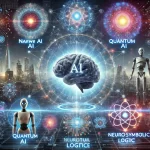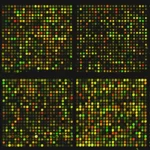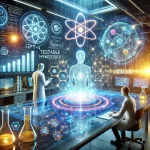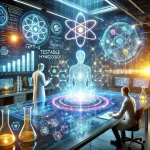
Career Spotlight: High Demand for Skilled Bioinformaticians
October 24, 20231. Introduction
Definition of Bioinformatics: Bioinformatics is an interdisciplinary field that combines biology, computer science, mathematics, and statistics to analyze and interpret biological data. It encompasses the development and application of computational tools and techniques to process, analyze, visualize, and understand biological and genetic information. At its core, bioinformatics focuses on the analysis of molecular and genomic data, including DNA sequences, protein structures, and metabolic pathways, among other complex biological datasets.
Relevance in the Current Scientific Landscape:
- Genomic Revolution: The completion of the Human Genome Project in 2003 marked a pivotal moment in the field of genetics and genomics. With the entire human genome sequenced, there was a sudden influx of massive amounts of genetic data. Bioinformatics has been indispensable in managing, analyzing, and interpreting this data, enabling scientists to delve deeper into the intricacies of the human genome and understand the genetic underpinnings of various diseases.
- Personalized Medicine: One of the most promising applications of bioinformatics is in the realm of personalized medicine. By analyzing an individual’s genetic makeup, personalized treatments can be developed to target specific genetic mutations responsible for diseases, enhancing treatment efficacy and reducing side effects.
- Drug Discovery and Design: Bioinformatics tools allow researchers to study the molecular structures of biological molecules and their interactions. This aids in the discovery of new drug targets and the design of drugs that can modulate these targets effectively.
- Comparative Genomics: By comparing the genomes of different species, bioinformatics aids in understanding evolutionary relationships, identifying conserved genetic elements, and elucidating the functions of various genes.
- Functional Genomics: Bioinformatics is pivotal in identifying the functions of genes and understanding how they interact within the intricate network of cellular processes.
- Metagenomics and Microbiome Analysis: The study of microbial communities, especially those that reside in the human body, has gained immense attention. Bioinformatics tools help analyze this vast metagenomic data, unraveling the roles of microbes in health and disease.
- Data Integration: In the era of big data, biological research often produces vast datasets from various sources. Bioinformatics provides the necessary tools to integrate these datasets, offering a more holistic understanding of biological systems.
- Emerging Diseases and Pandemics: Recent global health crises, like the COVID-19 pandemic, have underscored the importance of rapid genomic sequencing and analysis. Bioinformatics played a crucial role in identifying the causative agent, understanding its genetic makeup, tracking its spread, and aiding in vaccine development.
In conclusion, bioinformatics stands at the crossroads of biology and computational science, acting as a powerful catalyst for numerous groundbreaking discoveries in the realm of life sciences. Its significance in the current scientific landscape cannot be overstated, as it continues to shape the future of research, healthcare, and biotechnology.
2. The Confluence of Biology and Informatics
Historical Overview of Bioinformatics:
Bioinformatics, as a defined discipline, has its roots in the latter half of the 20th century, but the convergence of biology and informatics can be traced back even further.
- Early Foundations: The foundation of bioinformatics can be traced back to the development of the first protein sequence databases in the 1960s. Margaret Dayhoff’s work on the “Atlas of Protein Sequence and Structure” in 1965 is often considered one of the earliest endeavors in bioinformatics.
- Sequence Alignment: In the 1970s, the Smith-Waterman algorithm and the Needleman-Wunsch algorithm were developed for sequence alignment, pioneering the comparison of biological sequences.
- Genomic Databases: The 1980s saw the establishment of GenBank, a comprehensive DNA sequence database, which became a cornerstone for bioinformatics research.
- The Human Genome Project (HGP): Initiated in 1990, the HGP was an ambitious international effort to sequence the entire human genome. The massive amount of data generated required advanced computational tools for assembly, annotation, and analysis, firmly establishing bioinformatics as an essential discipline.
- Rise of Systems Biology: With the turn of the century, the focus began shifting from individual genes and proteins to entire biological systems. Bioinformatics became integral to systems biology, studying the interactions and networks within the cell.
How the Merging of Biology and Computer Science is Revolutionizing Research:
- Data Management: Biological experiments, especially in genomics and proteomics, generate vast amounts of data. Informatics provides the necessary infrastructure for data storage, retrieval, and management, ensuring that researchers can access and analyze data efficiently.
- Advanced Analysis: Complex biological phenomena require intricate analytical tools. Algorithms and software from computer science allow for the analysis of intricate biological processes, from DNA sequencing to protein structure prediction.
- Predictive Modeling: Combining biological knowledge with computational modeling allows researchers to make predictions about biological systems. For instance, protein-folding models can predict three-dimensional protein structures based on amino acid sequences.
- Interdisciplinary Collaboration: The fusion of biology and informatics has fostered collaboration between biologists, computer scientists, mathematicians, and physicists. This interdisciplinary approach has led to innovative solutions and fresh perspectives on longstanding biological questions.
- High-throughput Technologies: Technologies like next-generation sequencing (NGS) generate extensive data rapidly. Bioinformatics tools are essential for processing and interpreting the output of these technologies.
- Virtual Experiments: Simulations and in silico experiments facilitated by computational tools can complement traditional wet-lab experiments. They offer a way to test hypotheses and make predictions, often saving time and resources.
- Open Science and Data Sharing: The principles of informatics have promoted a culture of data sharing in biology. Repositories like GenBank and the Protein Data Bank (PDB) ensure that researchers worldwide have access to vital datasets, promoting collaborative and transparent science.
In essence, the confluence of biology and informatics has not just been a merger of two disciplines but a symbiotic relationship that has propelled both fields into new frontiers. The computational prowess of informatics, when applied to the intricate and vast datasets of biology, has revolutionized our understanding of life and has paved the way for innovations in healthcare, agriculture, and biotechnology.
3. Reasons for the Rising Demand
Bioinformatics has seen a surge in demand over the past decades. Here’s a deeper look into the reasons you’ve mentioned:
Explosion of Biological Data:
- High-Throughput Technologies: Instruments such as Next Generation Sequencing (NGS) platforms can sequence billions of DNA bases in a single run. Similarly, mass spectrometry-based proteomics can identify and quantify thousands of proteins in complex samples. Such technologies produce immense datasets that traditional analytical methods can’t handle effectively.
- Data Complexity: Beyond the sheer volume, the complexity and variety of biological data types, from sequences to structures to expression profiles, demand specialized computational tools for effective integration and interpretation.
Complexity of Diseases:
- Multifactorial Nature: Diseases like cancer aren’t the result of a single mutation but a confluence of genetic alterations, environmental factors, and lifestyle choices. Bioinformatics tools can integrate and analyze these multifaceted datasets, offering a holistic view of disease etiology.
- Omics Integration: Genomics, proteomics, metabolomics, and other ‘omics’ disciplines provide different layers of information about disease states. Bioinformatics allows for the integration of these layers, offering a comprehensive disease profile.
Personalized Medicine:
- Genomic Profiling: By sequencing an individual’s genome, potential genetic risk factors for diseases can be identified. Bioinformatics helps in analyzing these genomic profiles to provide insights into susceptibility to certain conditions.
- Therapeutic Tailoring: Based on genetic and molecular profiling, treatments can be tailored to an individual’s unique biology, ensuring higher efficacy and reduced adverse reactions. This shift from a ‘one-size-fits-all’ approach to a patient-centric model is made possible by bioinformatics analyses.
Drug Discovery and Development:
- Target Identification: With the help of bioinformatics, potential drug targets, such as mutated proteins in cancer cells, can be identified swiftly.
- Molecular Docking: Bioinformatics tools can simulate the interaction between drugs and their targets, predicting the binding affinity and potential efficacy of a drug molecule.
- Reduced Time and Cost: Traditionally, drug discovery is a lengthy and expensive process. Computational methods can significantly reduce the number of potential drug candidates that need to be tested in the lab, saving time and resources.
Evolutionary and Comparative Biology:
- Phylogenetics: Bioinformatics tools allow for the construction of phylogenetic trees, which depict the evolutionary relationships among a set of species or genes.
- Functional Annotation: By comparing the genomes of different organisms, conserved sequences can be identified. These sequences often have essential biological functions, and their conservation across species underscores their importance.
- Genome Evolution: Analyzing genome structures, gene order, and other genomic features across species can provide insights into genome evolution, speciation events, and the functional implications of genomic changes.
In summary, the rising demand for bioinformatics stems from the evolving nature of biological research, which is increasingly data-intensive, multifaceted, and geared towards precision. The computational prowess of bioinformatics stands as a pillar supporting modern biological research, healthcare innovations, and biotechnological advancements.
4. Key Skills Required for Bioinformaticians
The confluence of biology and informatics in the realm of bioinformatics necessitates a unique blend of skills. Let’s delve deeper into each of the categories you’ve mentioned:
Technical Skills:
- Programming Languages:
- Python: Known for its versatility and rich set of libraries such as BioPython, it is a favorite among bioinformaticians.
- R: Particularly popular for statistical analysis and data visualization, with packages like Bioconductor offering tools specifically for high-throughput genomics data.
- Java: Used in some bioinformatics applications, especially in the development of standalone software tools.
- Database Management:
- SQL: Knowing how to interact with relational databases is crucial, as many biological databases use systems like MySQL or PostgreSQL.
- NoSQL: With the advent of big data, NoSQL databases like MongoDB are becoming increasingly relevant for handling less structured biological data.
- Data Visualization Tools:
- Software like Tableau or libraries such as ggplot2 (R) and Matplotlib (Python) are essential for generating informative visualizations of complex datasets.
- Machine Learning and Statistical Analysis:
- As bioinformatics often deals with prediction and pattern recognition, familiarity with machine learning libraries like scikit-learn (Python) and tools for statistical analysis is crucial.
Biology Knowledge:
- Genetics, Molecular Biology, and Biochemistry: A foundational understanding of these subjects ensures that bioinformatic analyses are biologically relevant and meaningful.
- Biological Databases:
- Knowing how to navigate databases like GenBank, EMBL, and the Protein Data Bank (PDB) is fundamental.
- Familiarity with specialized databases, such as those for single nucleotide polymorphisms (SNPs), pathways, or protein-protein interactions, can also be critical depending on the specific area of bioinformatics.
Soft Skills:
- Problem-solving Ability: Given the interdisciplinary nature of bioinformatics, challenges often arise that require innovative solutions. A knack for analytical thinking and troubleshooting is invaluable.
- Collaboration and Teamwork: Bioinformaticians often work in interdisciplinary teams, collaborating with biologists, chemists, clinicians, and other experts. Being able to work harmoniously and productively within such teams is essential.
- Effective Communication:
- To Non-experts: Often, bioinformaticians need to explain complex computational results to biologists or clinicians who might not have an informatics background. Being able to simplify and effectively convey findings is crucial.
- Documentation: Good documentation practices ensure that codes, pipelines, and tools developed are understandable and usable by others in the community.
In essence, a proficient bioinformatician is not just a coder or a biologist but a bridge between the two realms. This hybrid expertise, combined with essential soft skills, ensures that bioinformatics contributions are both technically sound and biologically relevant.
5. Educational and Training Pathways
For those keen on diving into the fascinating world of bioinformatics, various educational and training avenues are available. Let’s explore these pathways in more depth:
Undergraduate:
- Background in Biology: Students with a solid foundation in molecular biology, genetics, or biochemistry often transition to bioinformatics by learning programming and computational skills.
- Background in Computer Science or Mathematics: Conversely, those with a strong computational or mathematical foundation can venture into bioinformatics by acquiring biological knowledge. This background can be advantageous, especially in algorithm development and data analysis.
- Interdisciplinary Programs: Some universities now offer dedicated undergraduate programs in bioinformatics or computational biology, providing students with a balanced education in both biology and informatics.
Graduate Programs:
- Specialized Degrees in Bioinformatics: These programs often start with foundational courses in both biology and computer science and then delve into specialized bioinformatics techniques and research.
- Computational Biology or Genomics: While closely related to bioinformatics, these programs might lean more towards biology with a heavy computational emphasis or focus more on genome analysis, respectively.
- Dual Degrees: Some institutions offer dual-degree programs, like a combination of a Master’s in Bioinformatics and an MBA, allowing students to gain both technical expertise and business acumen.
Online Courses & Bootcamps:
- MOOCs: Platforms like Coursera, edX, and Udacity offer courses on bioinformatics, ranging from beginner to advanced levels. These courses often come from top universities and institutions.
- Bootcamps: These are intensive, short-term training programs focused on specific bioinformatics skills or tools, ideal for professionals looking to upgrade or diversify their skill set.
- Online Communities and Workshops: Websites like Rosalind offer problem-solving platforms to learn bioinformatics through hands-on exercises. Similarly, workshops organized by societies like ISCB (International Society for Computational Biology) can be beneficial.
Post-doctoral & Internship Opportunities:
- Research Institutions: A post-doctoral stint at a research institution or a university can provide deep insights into specific areas of bioinformatics and pave the way for a research-oriented career.
- Pharma/Biotech Companies: Internships or post-doctoral positions in the R&D departments of biotech or pharmaceutical companies can be a gateway to industry-oriented bioinformatics roles.
- Collaborative Projects: Many large-scale biology projects, like the Human Genome Project or the Cancer Genome Atlas, offer opportunities for early-career bioinformaticians to gain experience while working on cutting-edge problems.
In conclusion, the educational and training pathways in bioinformatics are as diverse as the field itself. Depending on one’s background, interests, and career goals, they can chart a trajectory that best aligns with their aspirations. With the rapid advancements in the field, continuous learning and adaptation are key to staying relevant and impactful.
6. Career Prospects and Roles
Bioinformatics, with its interdisciplinary nature, offers a wide array of career opportunities. Depending on the individual’s training, skills, and interests, they can find a niche in academia, industry, healthcare, and beyond. Let’s examine these prospects in detail:
Academia:
- Researcher: Academics often work in universities or research institutions, focusing on novel computational methods, analyzing biological datasets, or exploring specific biological questions using bioinformatics tools.
- Lecturer/Professor: In addition to research, bioinformaticians can teach undergraduate and graduate courses in bioinformatics, computational biology, genomics, and related fields.
- Project Manager: These individuals oversee bioinformatics-related projects, ensuring that objectives are met, resources are allocated efficiently, and different teams collaborate effectively.
Industry:
- Biotech firms: Companies specializing in biotechnology often require bioinformaticians for tasks ranging from genome sequencing to drug development.
- Pharmaceutical companies: Bioinformatics plays a crucial role in drug discovery, pharmacogenomics, and personalized medicine. Bioinformaticians can work on identifying drug targets, analyzing clinical trial data, or modeling drug interactions.
- Data Analysis roles: Beyond traditional biotech or pharma roles, bioinformaticians can be data scientists or analysts in sectors like agriculture (for genetically modified organisms or crop improvement) or forensic science (for DNA analysis).
Healthcare:
- Clinical Bioinformatician: These professionals analyze and interpret genomic data for clinical applications, aiding in diagnoses or treatment plans.
- Genetic Counselor: With a background in genetics and bioinformatics, these counselors guide patients through the implications of genetic tests, helping them understand potential risks and benefits.
Freelance and Consultancy:
- Bioinformatics Consultant: As experts, bioinformaticians can offer their services to firms or research entities that require specialized analysis or tool development but don’t have in-house expertise.
- Freelance Data Analysis: With the proliferation of high-throughput technologies, there’s a growing demand for professionals who can analyze datasets on a project-by-project basis.
Government & Non-Profits:
- Public Health Roles: Governments require bioinformaticians for projects related to epidemiology, outbreak tracking (e.g., tracking COVID-19 variants), or bioterrorism defense.
- Conservation Biology: Bioinformatic tools can help in biodiversity studies, conservation efforts, and understanding the genetics of endangered species.
- Regulatory and Policy-making: With the deluge of genomic data, there’s a need for experts who understand both the science and its societal implications to help in framing regulations, guidelines, and policies.
- Research Funding Agencies: Organizations like the National Institutes of Health (NIH) or the European Molecular Biology Organization (EMBO) often hire bioinformaticians for roles in grant review, program management, or strategic planning.
In essence, the career landscape for bioinformaticians is vast and varied. With the increasing integration of computational methods in biological research and its applications in healthcare, agriculture, and other sectors, the demand for skilled bioinformaticians is set to rise. Whether one is inclined towards pure research, clinical applications, or even entrepreneurial ventures, bioinformatics offers a plethora of avenues to explore.
7. Challenges and Considerations
Bioinformatics, while offering a multitude of opportunities, also comes with its unique set of challenges. These challenges often stem from the very nature of the discipline – its interdisciplinarity, the rapid pace of technological advancement, and the sensitive nature of the data it deals with. Let’s explore these challenges in depth:
Data Privacy and Ethics:
- Sensitive Nature of Genetic Data: Genetic data is inherently personal. Once sequenced, it can reveal not only predispositions to certain diseases but also personal attributes and ancestry. Ensuring this data remains private is paramount.
- Consent and Usage: While patients or research participants might provide genetic data for one purpose, there are ethical concerns about how this data might be used in the future, especially without re-consent.
- De-identification Challenges: Even when genetic data is stripped of overt identifiers, it remains challenging to truly anonymize it. Research has shown that, in some cases, individuals can be re-identified from their genetic data.
Interdisciplinary Collaboration:
- Bridging the Language Gap: Biologists and computer scientists sometimes have different terminologies, methodologies, and priorities. Effective communication is key to ensure that bioinformatics projects are both technically sound and biologically relevant.
- Varied Training Backgrounds: A team might comprise members with varied expertise – some might be adept at coding but have a limited biology background, while others might be seasoned biologists with limited coding experience. Leveraging this diversity while ensuring cohesive functioning can be challenging.
Keeping Updated:
- Evolving Technologies: The tools and technologies in bioinformatics evolve rapidly. What’s considered state-of-the-art today might be obsolete in a few years.
- Continuous Learning: To stay relevant, bioinformaticians often have to invest in continuous learning, be it through formal education, workshops, online courses, or self-study.
- Integration of New Knowledge: As new biological insights emerge, bioinformatic tools and databases need constant updates. This can be particularly challenging when dealing with massive datasets or complex algorithms.
Other Considerations:
- Standardization: The field often lacks standardized protocols, which can lead to discrepancies in analyses and interpretations.
- Computational Infrastructure: The vast amount of biological data requires robust computational infrastructure for storage, analysis, and sharing. Maintaining and updating this infrastructure can be both technically and financially challenging.
- Publication and Reproducibility: With the complexity of bioinformatics workflows, ensuring that research is reproducible by others in the community is crucial yet challenging. This necessitates thorough documentation and open sharing of codes and datasets, which might not always be feasible due to privacy or proprietary concerns.
In conclusion, while bioinformatics holds the promise to revolutionize biology, medicine, and beyond, it also mandates a thoughtful approach to navigate its challenges. By being aware of these challenges and actively seeking solutions, bioinformaticians can ensure that their work is impactful, ethical, and sustainable.
8. Conclusion
Bioinformatics stands at the crossroads of biology and informatics, a testament to how the confluence of diverse disciplines can lead to groundbreaking advancements. Its rise over the past few decades has not only reshaped biological research but also laid the foundation for the future of personalized medicine, drug discovery, and our understanding of the intricate web of life.
The vast sea of biological data, from the genetic code of myriad organisms to complex protein structures, holds secrets that have long eluded us. Bioinformatics, with its powerful computational tools and algorithms, provides the means to decipher these secrets, enabling insights that were previously considered beyond reach. From mapping the human genome to identifying potential therapeutic targets for multifaceted diseases like cancer, the contributions of bioinformatics are both profound and far-reaching.
But beyond its scientific contributions, bioinformatics embodies a more profound lesson: the power of interdisciplinary collaboration. It underscores that the most complex challenges of our time cannot be addressed in silos but require the combined expertise and perspectives of varied disciplines.
For those standing at the precipice, considering a foray into this dynamic field, the opportunities are immense. The world of bioinformatics is akin to a vast, uncharted territory, brimming with potential discoveries. Aspiring professionals not only have the chance to delve deep into the intricacies of life’s code but also to drive innovations that can shape the future of healthcare, agriculture, and conservation.
Yet, as with any pioneering field, bioinformatics presents its own set of challenges, from ethical dilemmas surrounding data privacy to the ever-present need to stay updated in a rapidly evolving landscape. These challenges, however, should not be deterrents but rather seen as opportunities for innovation, growth, and making a lasting impact.
In closing, bioinformatics is not just a discipline; it’s a call to action. A beckoning for curious minds to dive in, collaborate, innovate, and play an indispensable role in shaping the future of biology and medicine. To all aspiring bioinformaticians – the canvas is vast, and the potential immense. Here’s to the journeys you’ll embark on and the contributions you’ll make to science and society.


















